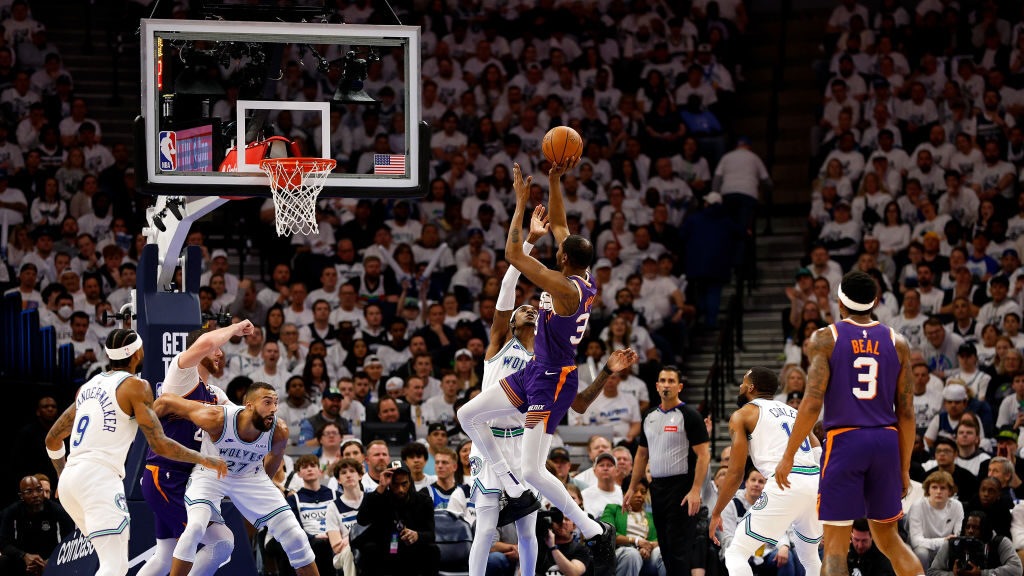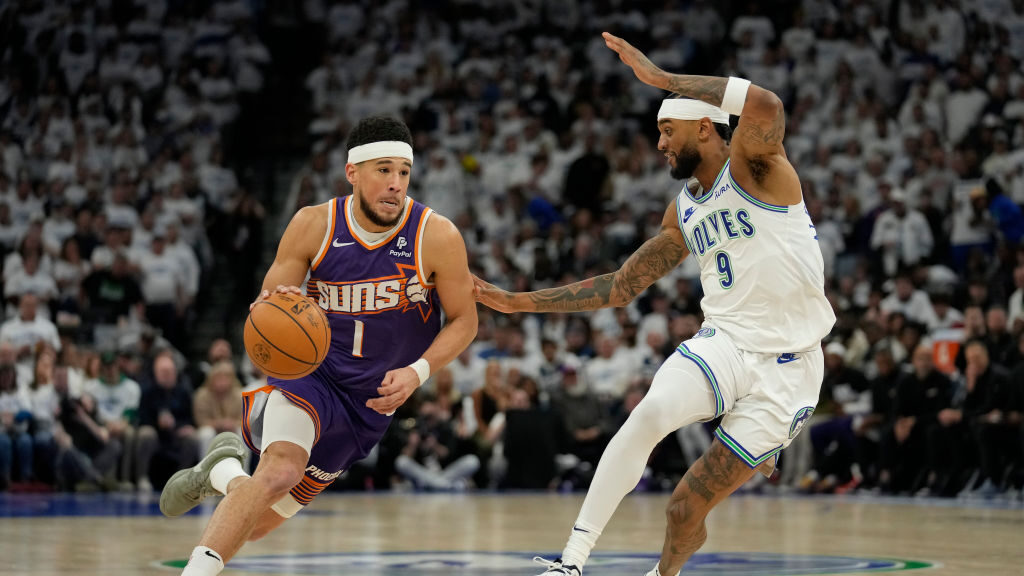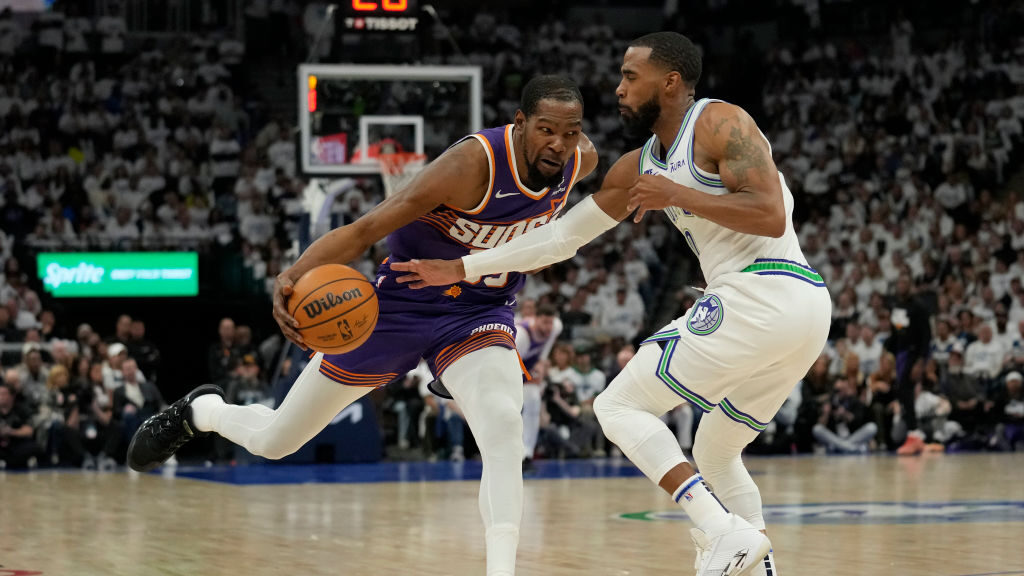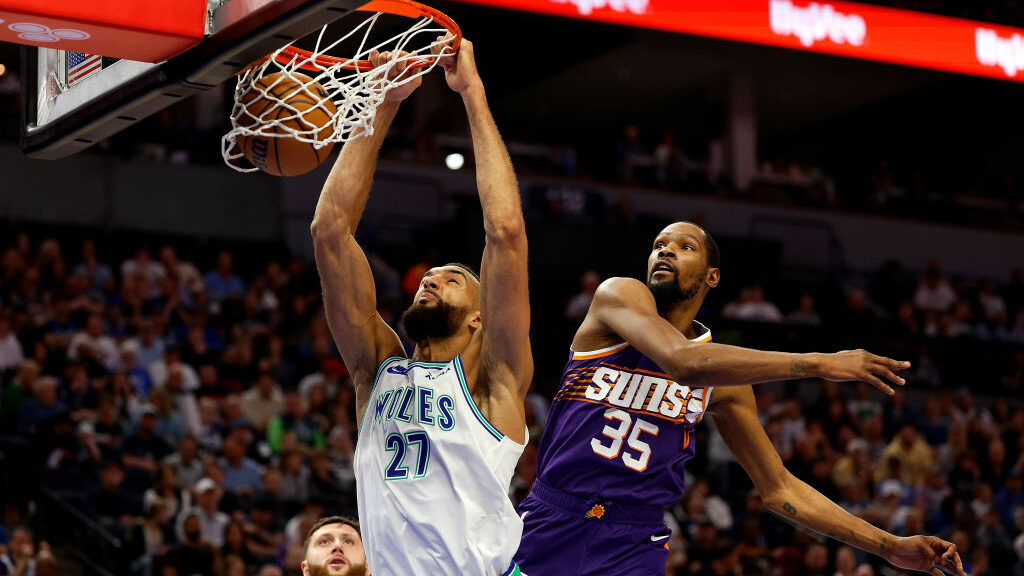Where Kevin Durant has been scoring for Suns, what can improve
Apr 5, 2023, 7:15 PM | Updated: 7:23 pm
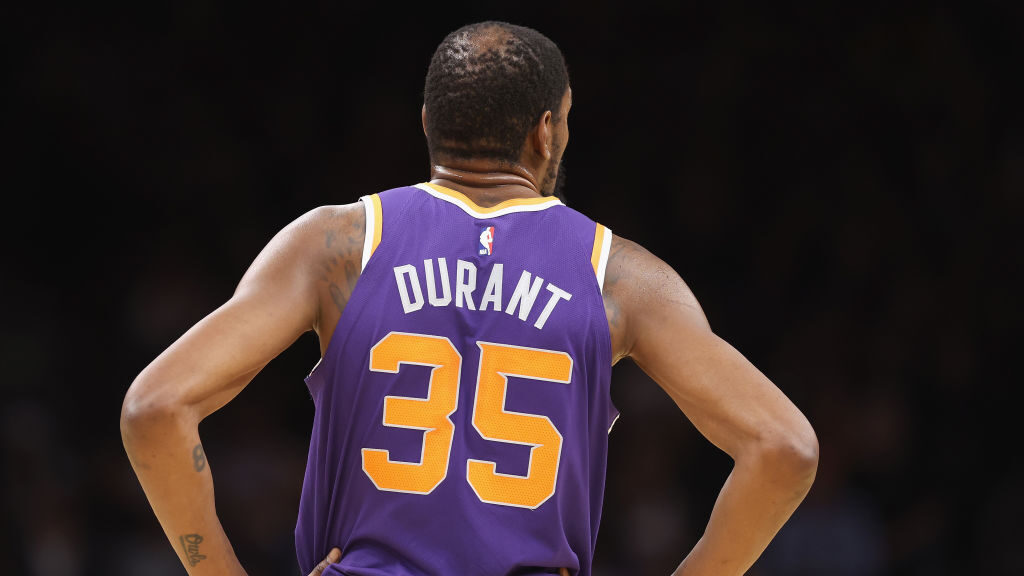
Kevin Durant #35 of the Phoenix Suns during the second half of the NBA game at Footprint Center on March 29, 2023 in Phoenix, Arizona. The Suns defeated the Timberwolves 107-100. (Photo by Christian Petersen/Getty Images)
(Photo by Christian Petersen/Getty Images)
With their playoff positioning locked up, the Phoenix Suns theoretically have little if anything to play for in three remaining regular season games.
But with only seven games under their belt when Kevin Durant is in the lineup, those could be three valuable fixtures to continue letting his incorporation develop in the best way possible.
In those contests, Durant is averaging 25.6 points, 6.3 rebounds, 3.4 assists and 1.3 blocks per game while shooting 58.2% from the field. Not bad, huh? The numbers, however, still don’t do his total impact justice. He’s been an all-around savant in a few games already, all while the two-way street of both him acclimating to Phoenix’s system and Phoenix’s system acclimating to him unfolds.
The biggest points of curiosity were 1) how Durant would open up the Suns’ offense, 2) the ways in which Phoenix wold use him and 3) the symbiotic relationship between the two of those benefitting the team as a whole.
So, with that in mind, let’s take a look at all 64 field goals Durant has tallied up to see how it’s going.
We will first comb through a few of the areas Durant has been used in the most before looking at a few he hasn’t, analyzing the balance in that along the way.
If you’ve been paying enough attention to Phoenix’s offense the last couple of years, you know where we’re starting.
Off-ball screening/elbow
Durant, as expected, has seamlessly slid into the “Mikalbow,” the off-ball screening sets curling around the elbow where former Sun Mikal Bridges made most of his mark.
Twenty-five percent of Durant’s 64 field goals have come via some movement off the ball through screening to set him up in the half-court offense. Of those 16, eight are in elbow variations.
Like with any other set, it can become a go-to for Phoenix if it proves to be effective that night, and the Suns mix in pindown screens around that part of the floor as well.
There’s also the actions on the wings that get Durant moving into the ball toward the paint.
This type of structure, whether for Devin Booker or Bridges, has proven to be the heartbeat of what Phoenix does in its half-court offense since Monty Williams’ arrival.
The early returns have been encouraging, and as we’ll discuss in a bit, once Durant is more prominently featured as a lead ball-handler, that’s when having this as a part of the full arsenal can really be a bonus.
Mid-post isolation
Williams has said that some of his coaching style has to do with adapting to his players, refuting the notion that there’s just one right way to play and everything should stick to his style.
So it shouldn’t be a surprise that 11 of Durant’s buckets have come in the mid-post, the bread and butter of Durant’s isolation game. This comes despite it being, well, an isolation. Williams’ 0.5 philosophy of quick-hitting decisions and movement briefly go out the window as the other four players watch Durant go to work.
That sounds like a negative but it’s not. Because it’s Kevin freaking Durant.
Both Chris Paul and Williams have spoken on simplifying the offense, and this is some of what they’re talking about. If you don’t double Durant, he’s probably going to score.
If you do, it triggers the Suns’ ball rotations and Durant is excellent at starting them. From there, it’s right back to 0.5 basketball.
It’s fun to see the beginning of implementing something new. The Suns will turn it into a sideline out of bounds play, since Durant’s mid-post positioning is right in the vicinity.
And because Phoenix is consistently going to this and defenders will try to counter by fronting Durant, it has a counter to the counter.
Transition
Duh. Another 11 Durant baskets are either in semi-transition or clear-cut transition.
A few of these are opportunities for him to bring the ball up and attack a defense that isn’t set, allowing him to find that unguardable pull-up jumper a little easier.
Catch-and-shoot 3s
Durant is often referred to as the best scorer of all time and it unintentionally takes the attention off how he’s also one of the best shooters ever too.
Even though teams know this and the individual defender never wants to leave Durant, players are trying to execute coverages at the same time.
Because of the other threats Durant plays with, that’ll lead to open 3s for him. He’s had 10 in the half court through seven games.
These points will always come naturally for Durant within the offense, like the four other baskets from scrambling situations off an offensive rebound.
Primary initiator
The majority of Durant’s time on the ball at the start of a Suns possession has come in semi-transition, which makes sense. Durant running the show would have to include knowing the offense like the back of his hand, and as we covered, he can get his touches in other ways.
But he is a fully operational death star on his own as a primary initiator. We won’t cover his playmaking today but it’s the most underrated part of his game on that side of the court. He can manipulate defenses and make the right passes at a high level.
On top of the four field goals that came from isolations, another four were with ball screens.
If there was one part of this exercise to spotlight as the part of Durant’s game to see more of in the postseason, it’s this one.
Screening
To bounce off that and close up shop, Durant’s got two scores as a screener, something Phoenix will use more of when the stakes are higher. We will either see some brief ghost screens like the first clip or a solid one to pop out of.
Maybe the Suns will deploy Durant as a small-ball five and really open this up.
Regardless, these are the many ways in which Durant has served as a fulcrum of Phoenix’s offense, all without some of the complexities that will sprout in due time.
And just seeing Durant involved in the flow of movement from the Suns has been great, like these last two baskets attacking closeouts off Booker’s gravity.
That’s Suns basketball, and Durant has fit right in.




